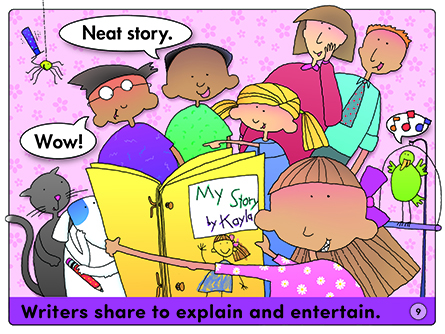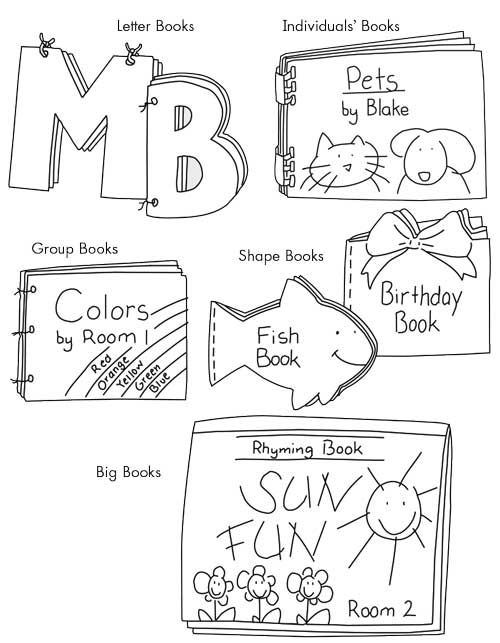Page 9 from

Young writers are often surprised and pleased when they write something that others can read and enjoy. It is very important to recognize and encourage their beginning efforts in this area. Try to provide many opportunities for children to share their writing. They can read it to their classmates, place it on a bulletin board, bind it in a book, take it home, and so on.
About the Picture The picture shows Kayla sharing a story she’s written about herself. It includes accolades from a unique audience of Kayla’s friends, family, animals, and Spot, too!
Major Concepts
- Sharing writing is an affirming experience for children.
- There are many different ways to share writing.

Young writers are often surprised and pleased when they write something that others can read and enjoy. It is very important to recognize and encourage their beginning efforts in this area. Try to provide many opportunities for children to share their writing. They can read it to their classmates, place it on a bulletin board, bind it in a book, take it home, and so on.
About the Picture The picture shows Kayla sharing a story she’s written about herself. It includes accolades from a unique audience of Kayla’s friends, family, animals, and Spot, too!
Major Concepts
- Sharing writing is an affirming experience for children.
- There are many different ways to share writing.
